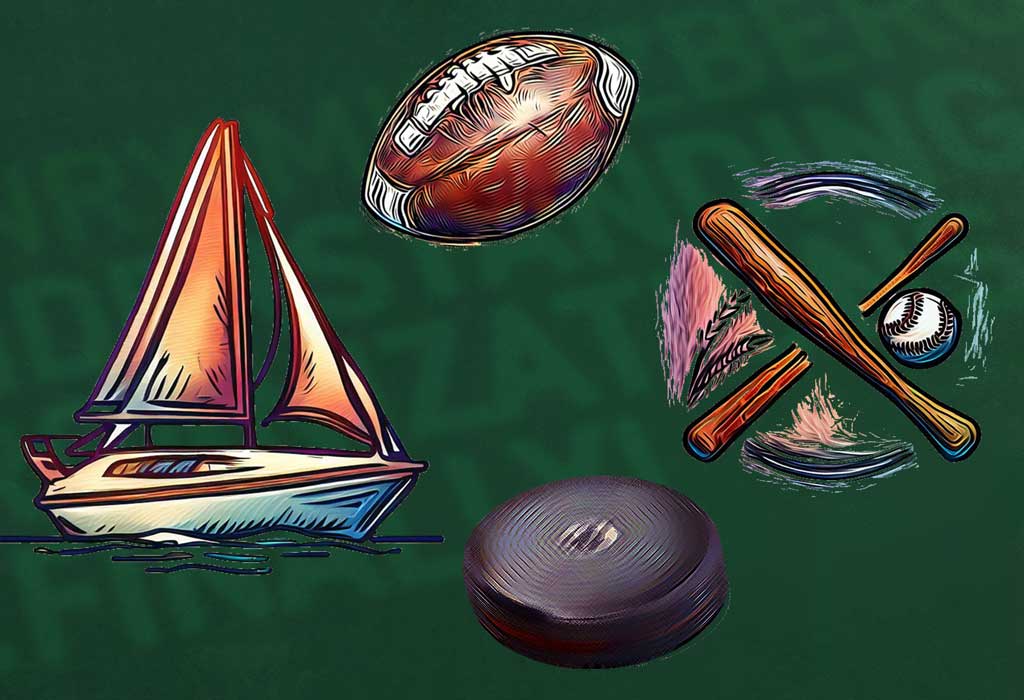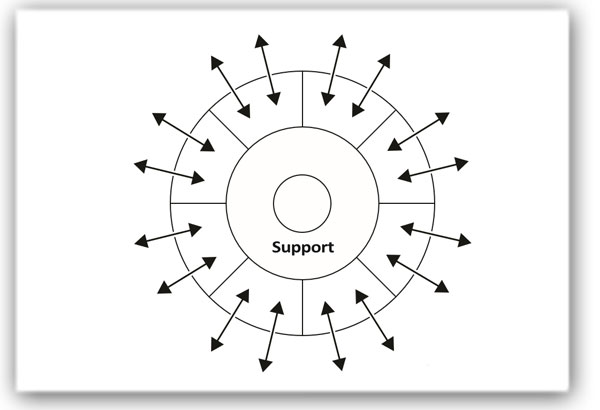Fundamental Forms for Favorite Sports
11 May 2023
This TWOG is adapted from my new book, Understanding Organizations… Finally! (available on Berrett-Koehler or on Amazon).
A shorter version of this article appeared in "Chief Executive."
If there is no best way to organize, how many ways can there be? Four. For starters, at least; in fact, there are as many ways as there are organizations, as we shall see.
There are times when we need to caricature reality to sharpen its differences and so better understand it. A limited number of forms can help us do that for organizations. The four discussed are labeled the Personal Enterprise, the Programmed Machine, the Professional Assembly, and the Project Pioneer.

Think restaurants: the corner diner, a fast-food franchise, a gourmet dining room, a catered event—four very different ways of delivering the same service. One revolves around a single person, the owner; the second is fully programmed; the third relies on the skills of its chefs and others; and the fourth is customized, as a project. In the natural world, compare a troop of monkeys with the alpha male at its head, a flock of geese flying in formation, ants scurrying around doing their own thing together, and a family of beavers building a dam. But clearest of all may be how these four forms play out in sports.
The Personal Enterprise

The structure of the Personal Enterprise is characterized by what it is not: elaborated. It actually resists structure. This form has a loose division of labor and little analytic staff, which means that it discourages systems of planning and control, as a threat to the organization’s one authority. In small Personal Enterprises, it is not uncommon for everyone to report to the chief.
I decided to use a team sport to illustrate each of the forms. Three came easily, not so the one for this form. In what team sport does a single person so dominate? The answer was obvious when realized it: world cup yacht racing. One person can get the idea, the vision, work with the designer of the hull, engage the crew, and skipper during the races. It’s not that the other members of the crew are incidental; it’s that their efforts revolve around the chief.
The Programmed Machine

Programmed Machines love hierarchy, order, control, systems, and especially rules, rules, rules. Everything conceivable is programmed, sometimes even the customers. (Have you cleared your tray at McDonald’s lately?) All this so that the organization can run as smoothly as a machine.
No sport comes close to North American1 football for its sharp divisions of labor and the extent of its programming. Rules or codes specify who can hold the ball, catch it, and kick it. Look at the formation on the field, not to mention the cheerleaders on the side: everybody is so carefully lined up. This is not yacht racing, believe me, let alone hockey. Even hierarchy is built right in: the quarterback calls the play, possibly radioed in from the coach, by number no less, and all the players respond accordingly. A sport made to measure for “scientific management”!
The Professional Assembly

Here, skilled professionals assemble to carry out their services: educate students, transplant hearts, make music, play baseball. It may look like they are working together, but mostly they are working apart, coordinated almost automatically by the standardization of their skills, based on their extensive training.
Watch an orchestra in concert, or an ant colony in action, and you will see amazing coordination without the need to exchange a single utterance or take a single order Everyone knows what to expect of everyone else. Is the double play in baseball any different? The shortstop picks up the ball and flips it to the second baseman, who throws out the player at first base. The beauty is in the execution, not the innovation, just as in open-heart surgery. (Would you like to be operated on by a creative surgeon?)
Can you imagine any other team sport more individualistic than baseball? The players all stand apart, each to do his or her own thing. (Compare this with a scrum in rugby.) No one on the field is in charge, even the manager in the dugout dresses like the players. At bat, the players come up one by one and run the bases alone. Everyone is in a personal silo. This has to be the best sport to play during a pandemic, leaving aside virtual chess.
The Project Pioneer

The Project Pioneer is the explorer of the modern world, staffed with intrapreneurial experts who collaborate to create novel outputs—ones that open new territory.
In hockey, basketball, rugby, and soccer, when a team picks up the puck or ball at its end, nobody quite knows how the play will unfold—the players included, who have to collaborate spontaneously to outwit their opponent. It’s like a new project every time.
The essence of these sports is to take advantage of the situation at hand, including the strengths and weaknesses of the players on both sides as well as the opportunities that open up. Of course, there can be surprises in the other sports too, but these tend to be the exceptions more than the rule. In a project organization, expect the unexpected. No scorecard to fill in here, as in baseball—what would the categories be anyway? And in hockey, who could write that fast? (Soccer is like hockey in slow motion, while baseball has been described as watching the grass grow.) Robert Keidel has written that “basketball is too dynamic a sport to permit the rigid separation of planning and execution that characterizes football… [Quoting one famous player]: ‘Your game plan may be wiped out by what happens in the first minute of play.’”2
So here we have it: fundamental forms for favorite sports. How about your organization? Be careful. No organization fits any form perfectly. Some come close, and many have hybrid characteristics—football players are, after all, highly trained too. Indeed, since every one of us is unique, and we are the ones who make up organizations, every organization is unique, even if only to adapt to the idiosyncrasies of its people. Therefore, every structure has to be customized.
This TWOG is adapted from my new book, Understanding Organizations… Finally!
You can order the book on Berrett-Koehler or on Amazon.
A shorter version appeared in "Chief Executive."
-----------------
1.North American, not American, because the sport was invented at my own university, McGill, in Canada.↩
2. Keidel has written extensively about sports as models of different organizations, with conclusions similar to that in this book about baseball, football, and basketball. See his Game Plans: Sports Strategies for Business (Beard Books, 1985); also see his “Teamwork, PC Style,” PC/Computing 2, no. 7 (July 1989): 126–131, and “ Team Sports Models As a Generic Organizational Framework,” Human Relations 40, no. 9 (1987): 591–612.↩